|
Facts
about the Kingdom of Saudi Arabia
'At
a Glance'
|
Saudi Arabia
is a well developed oil-based economy, founded on Islamic principles, and plays
host to millions of pilgrims from all around the world. The country has the
largest reserves of petroleum in the world (26% of the proved total), ranks as
the largest exporter of petroleum, and plays a leading role in OPEC. |
-
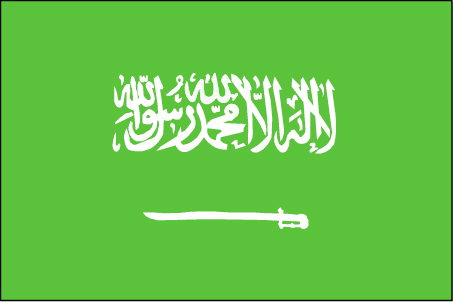
|
The
Green Banner of Islam - the flag of the Kingdom
|
The following
table summarises facts about our country:
-
-
| Official
Name |
Al-Mamlaka
al-Arabiya as-Saudiya (The Kingdom of Saudi Arabia) |
| Area |
2,250,000
square kilometers (868,730 square miles) |
| Physical
Features |
Deserts,
Plateaux, Mountains |
| Highest
Point |
Jabal
Sawda |
| Population: |
21.4
million (1999 estimate): 77% urban, 23% rural |
| Language |
Arabic |
| Religion |
Islam |
| Flag |
Green
Banner of Islam, bearing the inscription: "There is no God but
God; and Muhammad is his Messenger". The sword was added in
1906, symbolizing the military successes of Islam and of Ibn Saud,
founder of the Kingdom of Saudi Arabia
|
| Anthem |
"Sarei
Lil Majd Walaya" |
| Currency |
Saudi
Riyal |
| Capital |
Riyadh
(Estimated population 2001: 4.3 million) |
| Head
of State and Prime Minister |
King
Fahd bin Abdul Aziz, Custodian of the Two Holy Mosques |
| Highest
Court |
Supreme
Council of Justice |
| Administrative
Regions |
Al-Baha,
Al-Jouf, Asir, Eastern, Hail, Jizan, Madinah, Makkah, Najran,
Northern Border, Qasim, Riyadh, Tabouk |
| GDP |
$173.1
billion (1999 est.) |
| GDP/
capita |
$9,510 |
| Exports |
$39.4
billion (1999) |
| Imports |
$37.9
billion (1999) |
| Currency |
1
Saudi riyal (SR) = 100 halalah |
| Exchange
Rate |
Saudi
riyals (SR) per US$1 - 3.7450 (fixed rate since late 1986) |
History
|
The
first ruler of the First House of Saud
was Muhammad bin Saud
(forebear of the present rulers). He started as ruler of Ad-Dar'iyah, where he
joined forces with Sheikh Muhammad bin Abdul Wahhab
the eminent religious leader, in what could be called the first alliance.
Muhammad bin
Saud concluded an agreement with Imam Muhammad bin Abdul Wahhab that together
they would bring the Arabs of the peninsula back to the true faith of the
Islamic religion. They confirmed this agreement with an oath in 1744 (1157 AH).
Muhammad bin
Abdul Wahhab did not found a new sect. His travels through the Arab lands which
then formed part of the Ottoman Empire revealed to him diverse deviations from
the true Islamic faith. His purpose was to strip away those deviations and to
re-establish Islam in its pure form.
In a
speech delivered by His Majesty King Abdul Aziz (Ibn Saud) in Makkah, at the
Royal Palace on May 11, 1929, the King said that:
"They
call us the "Wahhabis" and they call our creed a "Wahhabi"
one as if it were a special one... and this is an extremely erroneous allegation
that has arisen from the false propaganda launched by those who had ill feelings
as well as ill intentions towards the movement. We are not proclaiming a new
creed or a new dogma. Muhammad bin Abdul Wahhab did not come with anything new.
Our creed is the creed of those good people who preceded us and which came in
the Book of God (the Qur'an) as well as that of his Messenger (the prophet
Muhammad, prayer and peace be upon him).
Abdul
Aziz bin Abdul Rahman Al Saud (Ibn Saud) laid the
foundations for the modern state of Saudi Arabia. His main achievement was the
unification of many warring tribes - all proud of their own lineage and
traditions. His success derived from his faith in Islam and his determination to
maintain and build on the traditions of the region. It is the unique combination
of faith and respect for tradition, while adapting to the technological
developments of modern world, which characterizes the Kingdom of Saudi Arabia
today.
|
|
King
Abdul Aziz Al-Saud (ibn Saud) |
|
In 1902
(1319/20 AH) Ibn Saud retook the city of Riyadh in a daring capture and
established his rule over that area. From 1902 through 1926 (1319 - 1445 AH), in
an outstanding example of leadership, energy and skill, Ibn Saud consolidated
the unity of most of the Arabian Peninsula.
In September
1932 (1350/51 AH), the Kingdom of Saudi Arabia was founded and acquired its
present name.
Excellent
accounts of the history and development of Saudi Arabia can be found by
following the links presented in Islamic
Links.
|
Modern
Saudi Arabia
|
Due to the
modern Saudi state's policy of industrial diversification, the Kingdom has
developed into a prosperous and diversified economy and has reduced dependence
on oil revenues. A wide range of manufacturing industries have been developed
offering employment for workers from all around the world.
The Kingdom
has adopted a free market economic model. The financial, industrial and trade
sectors of the economy have made rapid progress, enabling the private sector to
play an increasingly important role in the development and diversification of
the economy, especially in the fields of construction and farming.
To achieve its
ambitious development plans the government has devoted vast resources to a
program covering primary, secondary and higher levels of education. All the
Kingdom's Development Plans have taken into account the educational aspirations
of the Saudi people, providing free education to all. The educational system has
been continuously and systematically expanded to accommodate the ever-growing
demand for educational services. Through this investment, the Kingdom has been
able to guarantee equality of opportunity for all and to ensure that the
Kingdom's need for an educated and trained national workforce to carry forward
the Kingdom's future development can be fulfilled.
Of all the
benefits that have accrued to the citizens of the Kingdom, none is greater than
the provision of free healthcare of the highest standard, a provision extended
to all those who visit the Kingdom in pilgrimage. The
decision to embark on plan of inclusive healthcare provision was taken by King
Faisal who initiated a massive hospital building programs.
Huge
industrial complexes built at Jubail
on the Arabian Gulf and Yanbu
on the Red Sea by the Royal
Commission for Jubail and Yanbu, are the key to the Kingdom's national
industrialization plans. These two industrial cities provide the basis for the
Kingdom's program to develop hydrocarbon-based and energy intensive industries.
The investment in these industrial cities has as its major objective a reduction
in the Kingdom's dependence on oil revenues by gaining access to the world's
petrochemical markets. This route to industrialization exploits cheap energy and
raw materials for petrochemical manufacture.
Modern hotels
and resources for visitors have sprung up in Riyadh,
Jeddah, Medina, Damman and
all over the country offering tourists and visitors unmatched facilities in the
region. The national carrier Saudi Arabian Airlines travels to all corners and
brings visitors back to the Kingdom's cities.
|
|
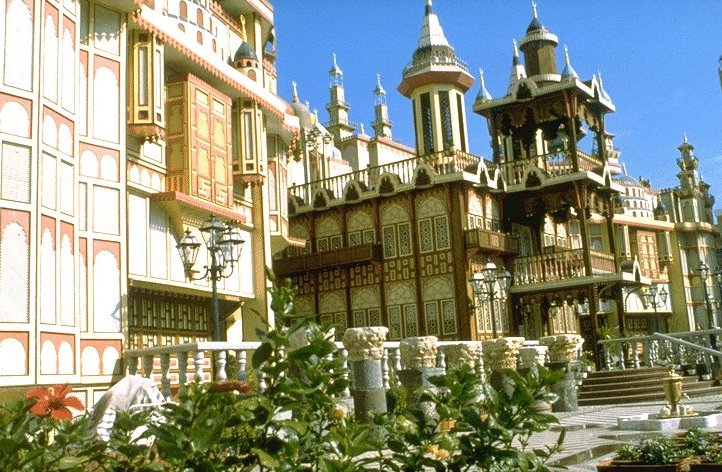
|
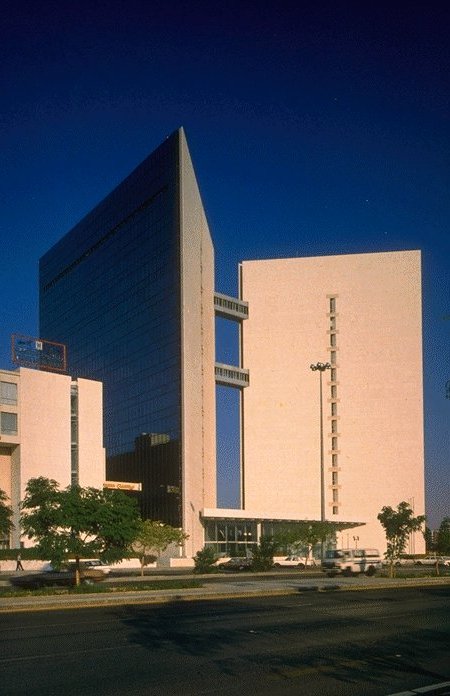
|
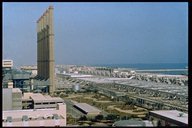
|
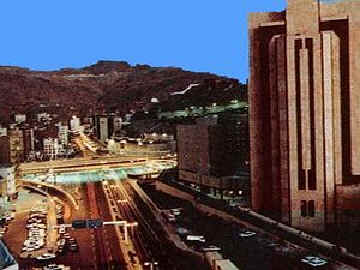
|
| Jeddah
- 'old city' |
Modern
Riyadh |
Jubail
- Industrial production |
Makkah
City |
| |
|